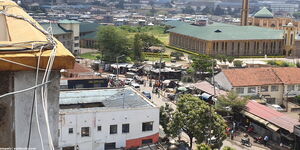Former BBC Africa business editor, Larry Madowo, on Friday, November 22, expressed his disgust at a business feature published by the New York Times centred on Kenya.
Madowo, who took a career break to take up a fellowship opportunity at the Columbia University Graduate School of Journalism, faulted the reporter for ignoring Kenyan contextual nuances in sourcing the story.
Taking to his Twitter account, Madowo described the article as a blatant act of erasing Kenyans from their own country, a point he illustrated by the number of non-back Kenyans quoted in the report.
“The New York Times published a story about fashion in Kenya's richest suburb by a white writer & white photographer. Black Kenyans quoted - 0, obligatory tribal references - 2, white women quoted - 6,” read Madowo's incensed tweet.
Larry put to task the author of the article, Ginanne Brownell Mitic, accusing her of ignoring the locals in the area the story emanated from.
The article in reference was titled 'A Nairobi Neighborhood Ablaze With Color, Design and Creativity', was accompanied by a blurb that read 'High-end stores merge the latest in design with works from tribal cultures.'
"And what does ‘tribal cultures’ mean exactly? Is it shorthand for non-white?" Larry wondered.
Nudged by Madowo, Kenyans weighed in on the ensuing conversation with a majority agreeing with Madowo's sentiments.
@Guyo Golo Adhi wrote;
“Similar scripts with Nat Geo sending photographers from NY to come and cover the Samburu lifestyle. Laughable.”
Irene NM wrote;
“Given a chance the New York Times would quote Karen Blixen. Their African correspondents need to take a course in decolonisation before writing any article on the land. They romanticise us and are still stuck in pre-colonial writing.”
“Larry you are doing a good job, saying it as it is, they pretend to know our culture and heritage more than us.” wrote one Pitosh Mkenya.
Another user, Owiyo Erick, said;
“The New York Times is a scam. They will never say anything good African without a link to their colonial mind reporting.”
“At least they had a decent photo of Philis Murage, I think the story is okay... If only NYT didn’t have a reputation of having different standards for blacks as evidenced in Dusit attack, this story wouldn’t have been an issue,” wrote Ngumba Kimani.
However other netizens seemed to differ with Larry on his opinion.
Ian Cox wrote;
"The article is about fashion in Karen. How many black Kenyan fashion designers are based or have shops in Karen?"
Rebbeca Kiarie wrote;
"But there's a black lady in the photo!!! What more could you possibly need?"
"This is the equivalent of a white American journalist complaining about Chams Report, "Daring Abroad" that it only features black Kenyans in its shows." Roney Ngala wrote.
This is not the first time Kenyans have been at loggerheads with the international publishers over condescending news coverage.
In the aftermath of the January 2019 Dusit D2 terrorist attack, the New York Times published a graphic image of the victims from the attack, something that sparked outrage in Kenya over the ethical considerations by the publisher.
The publication, however, justified its action claiming the decision was reached to give its readers a 'clear picture of the horror of an attack like this'.
"We want to be respectful to the victims and to others affected by the attack. But we also believe it is important to give our readers a clear picture of the horror of an attack like this. This includes showing pictures that are not sensationalised but that give a real sense of the situation," a statement by the publication read.












